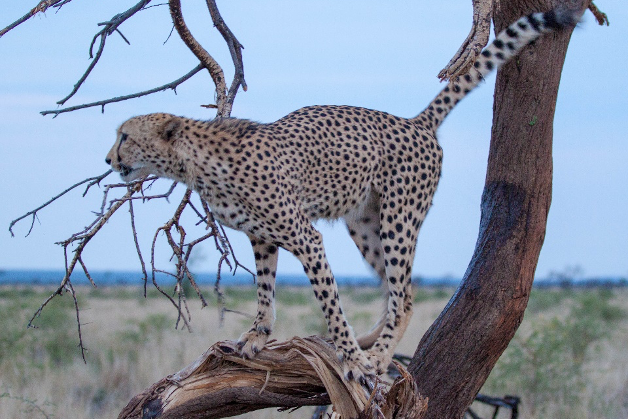Territorial Behaviors in Animals Could Play Greater Role in Disease Spread than Previously Thought
Finding could have implications for understanding disease spread
For release: June 11, 2020
Annapolis, MD — Territorial behaviors in animals, such as a puma using its scent to mark its domain, may help to decrease the severity of a potential disease outbreak—but not without the cost of increased persistence of the disease within the population.
This finding comes from a new study, led by Lauren White, of the University of Maryland’s National Socio-Environmental Synthesis Center, published in PLOS Computational Biology.
While disease research often addresses direct social contact without considering individual animals’ movement, White and her colleagues implemented a unique approach in this study by using a mathematical model to link animal movement and the spread of disease. The model aimed to help the researchers understand more clearly the relationship between animals’ indirect contact and disease spread.

While animals’ territorial behavior has the potential to stop disease spread through direct transmission, pathogens remaining in the environment could still be infectious. Therefore, the researchers created a model in which infected animals could indirectly transmit the disease to others from pathogens left behind from the animals’ deposited scent marks. By simulating the animals’ movement across their territories, the researchers were able to see how such movement impacted the spread of disease.
As part of the study, the researchers simulated a scenario with conditions conducive to a disease outbreak: a high density of animals and slower disease-recovery rate (animals are sick for longer). They found that territorial movement resulted in a lower number of animals who became infected but with the consequence of the disease persisting for a longer period of time within the population. The researchers wrote that such results suggest that indirect contact among animals, through behavior such as scent marking, could have a more important role in the transmission of disease than previously thought.
“It was exciting to be able to incorporate a movement-ecology perspective into a disease-modeling framework,” White says. “Our findings support the possibility that pathogens could evolve to co-opt indirect communication systems to overcome social barriers in territorial species.”
These findings could have implications for how disease spreads more broadly by revealing the importance of factoring movement behavior into studies of disease transmission. The researchers said they would continue to expand the model by including other factors, such as varying habitat quality and prey kill sites.
*Adapted from PLOS Computational Biology
###
Citation: White LA, VandeWoude S, Craft ME (2020) "A mechanistic, stigmergy model of territory formation in solitary animals: Territorial behavior can dampen disease prevalence but increase persistence." PLoS Comput Biol 16(6): e1007457.
https://doi.org/10.1371/journal.pcbi.1007457
Contact information:
Lauren White, lwhite@sesync.org, 1-540-454-1081, National Socio-Environmental Synthesis Center, University of Maryland
About SESYNC
The University of Maryland's National Socio-Environmental Synthesis Center (SESYNC) in Annapolis brings together the science of the natural world with the science of human behavior and decision making to find solutions to complex environmental problems. SESYNC is funded by an award to the University of Maryland from the National Science Foundation. For more information on SESYNC and its activities, please visit www.sesync.org.